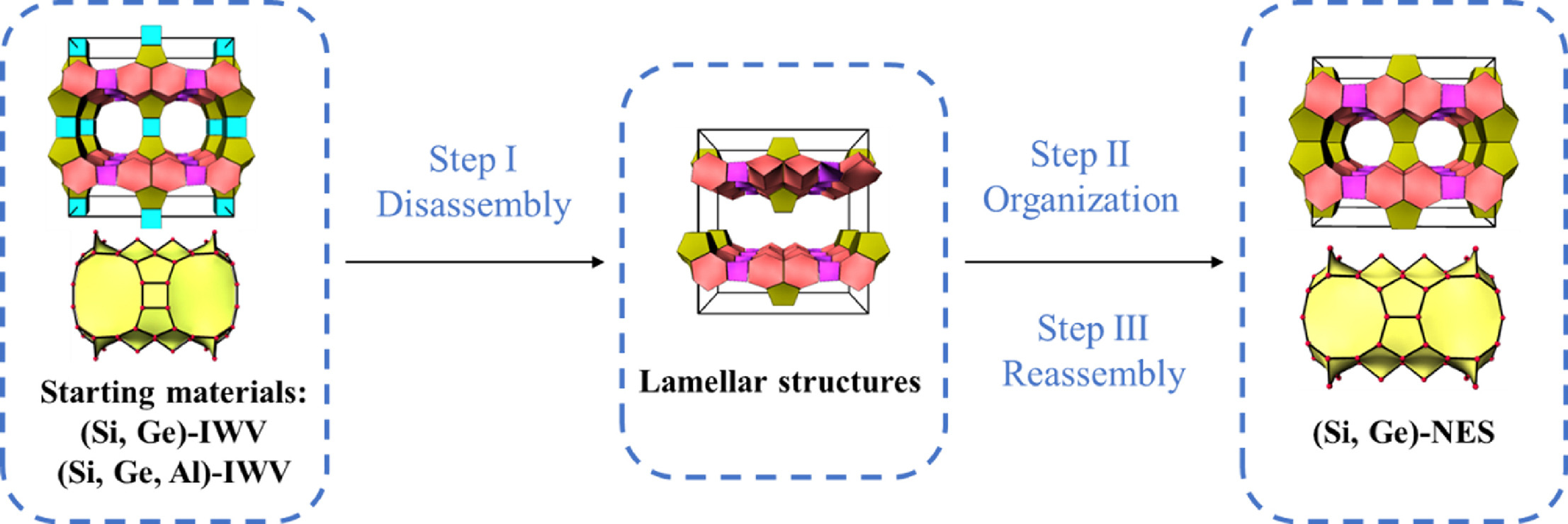
Luminescent coordination polymers with mixed carboxylate and triazole ligands for rapid detection of chloroprene metabolite
Yue Mao, Zhonghang Chen, Tiankai Sun, Wenyue Cui, Peng Cheng, Wei Shi* Submit a Manuscript
Zhenzhen Zhao, Meichen Jiao, Jiejie Ling, Han Jiang, Yan Gao, Hao Xu, Hai-Qing Li, Jingang Jiang*, Peng Wu*, Le Xu*
Chin. J. Struct. Chem., 2024, 43: 100336. DOI: 10.1016/j.cjsc.2024.100336
September 15, 2024
IWV; NES; Structure transformation; Zeolite porosity
ABSTRACT
Modulation of zeolite porosity, including the size and type of channel and cage, is essential for catalysis and separation. Although zeolites with a variety of porous systems have been synthesized by hydrothermal or post-synthetic routes, there is still a lack of rational control of zeolite porosity in the range of large to medium pore/cage. Herein, based on the rational structure building, the structure similarity between IWV topology with large-pore opening and supercage and NES topology with medium-pore opening and medium cage is discovered. Based on the guidance of structure building, two IWV-derived daughter zeolites with different framework compositions, (Si,Ge)-ECNU-31 and (Si,Ge,Al)-ECNU-31, are hydrothermally prepared with built-in structural weakness due to the presence of a large amount of framework Ge atoms, which are utilized to prepare ECNU-32 zeolite with NES topology through subsequent post-synthetic treatment under controlled condition. It is demonstrated that the parent IWV zeolite with only Ge and Si as framework atoms is benefit in post-treatment to obtain a highly crystalline NES zeolite. In contrast, the co-existence of framework Al atoms in (Si,Ge,Al)-ECNU-31 zeolite enhances its hydrothermal stability in water. However, the treatment with acid and amine solutions causes the partial collapse of zeolite structure. Our results demonstrate that rational selection of the framework composition and post-synthetic parameters are crucial for the transformation of large-pore zeolite to medium-pore zeolite.






